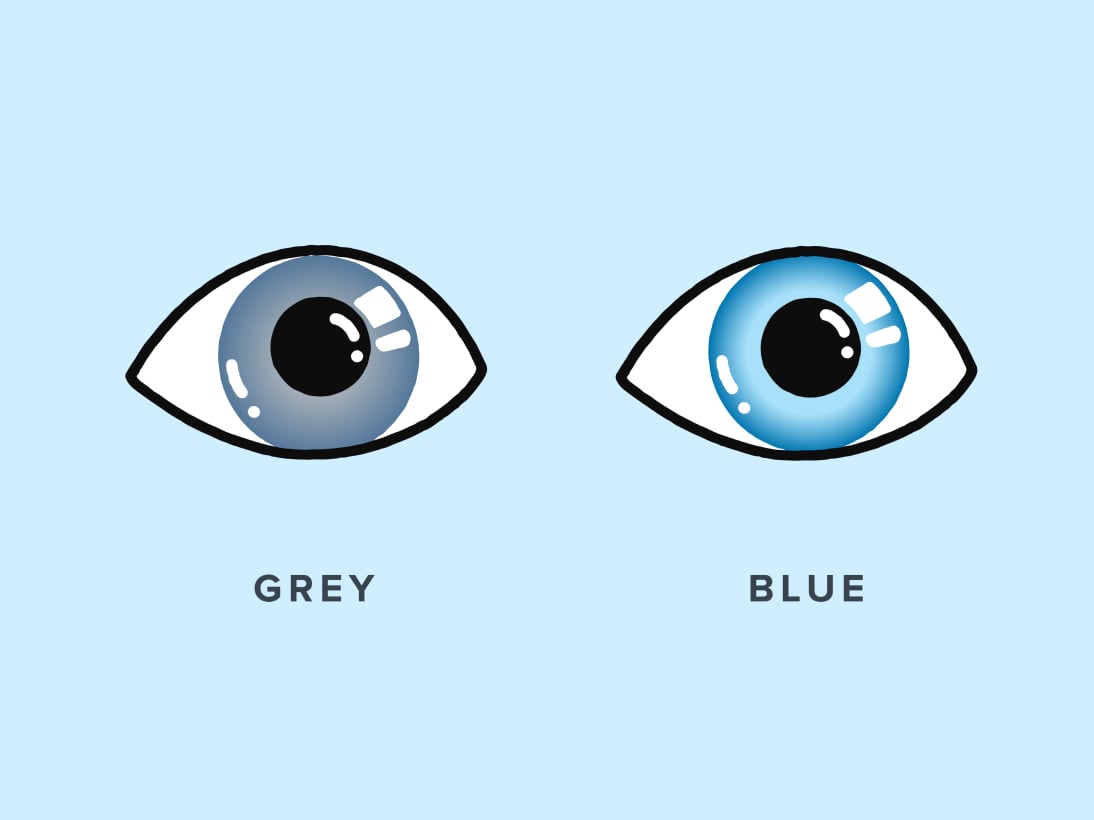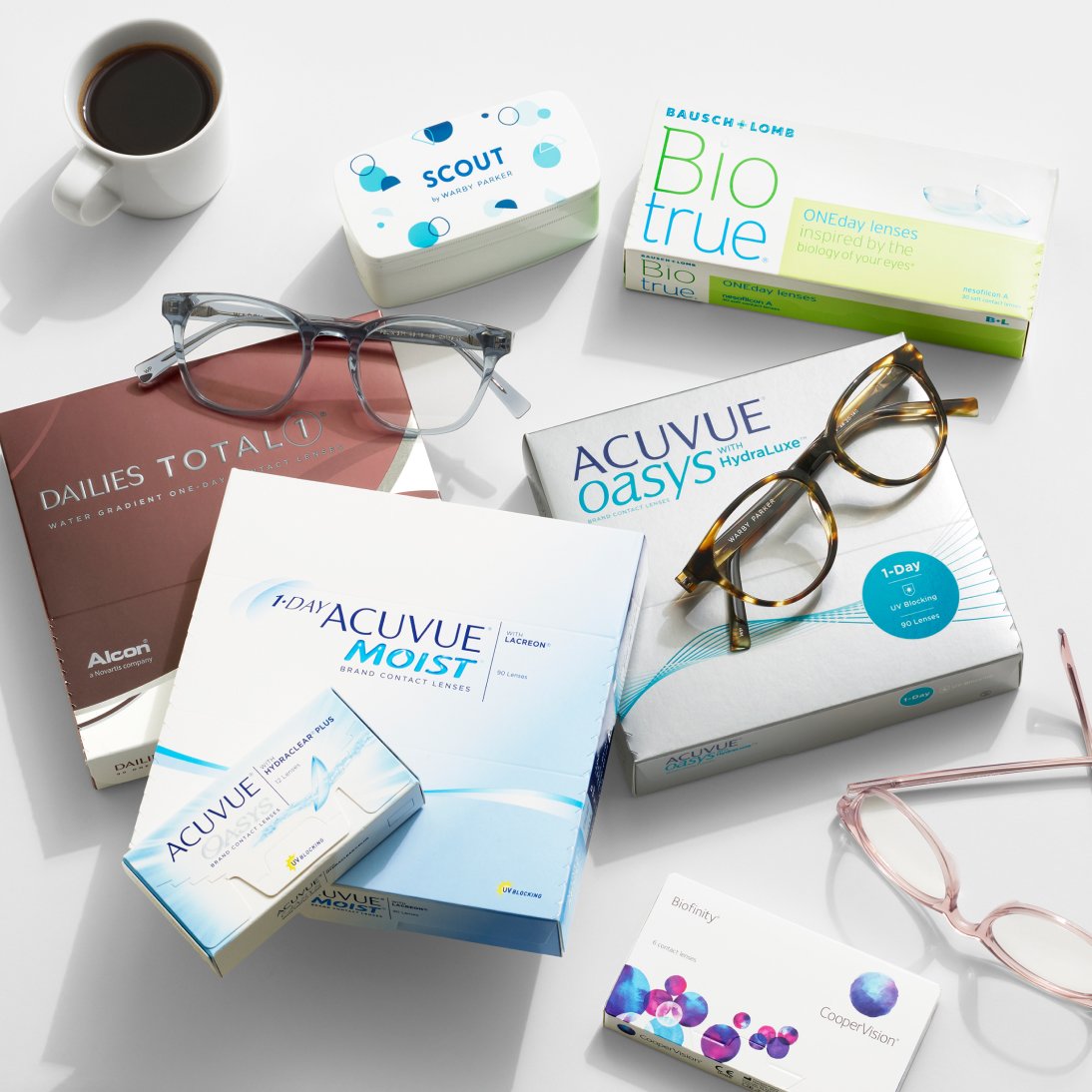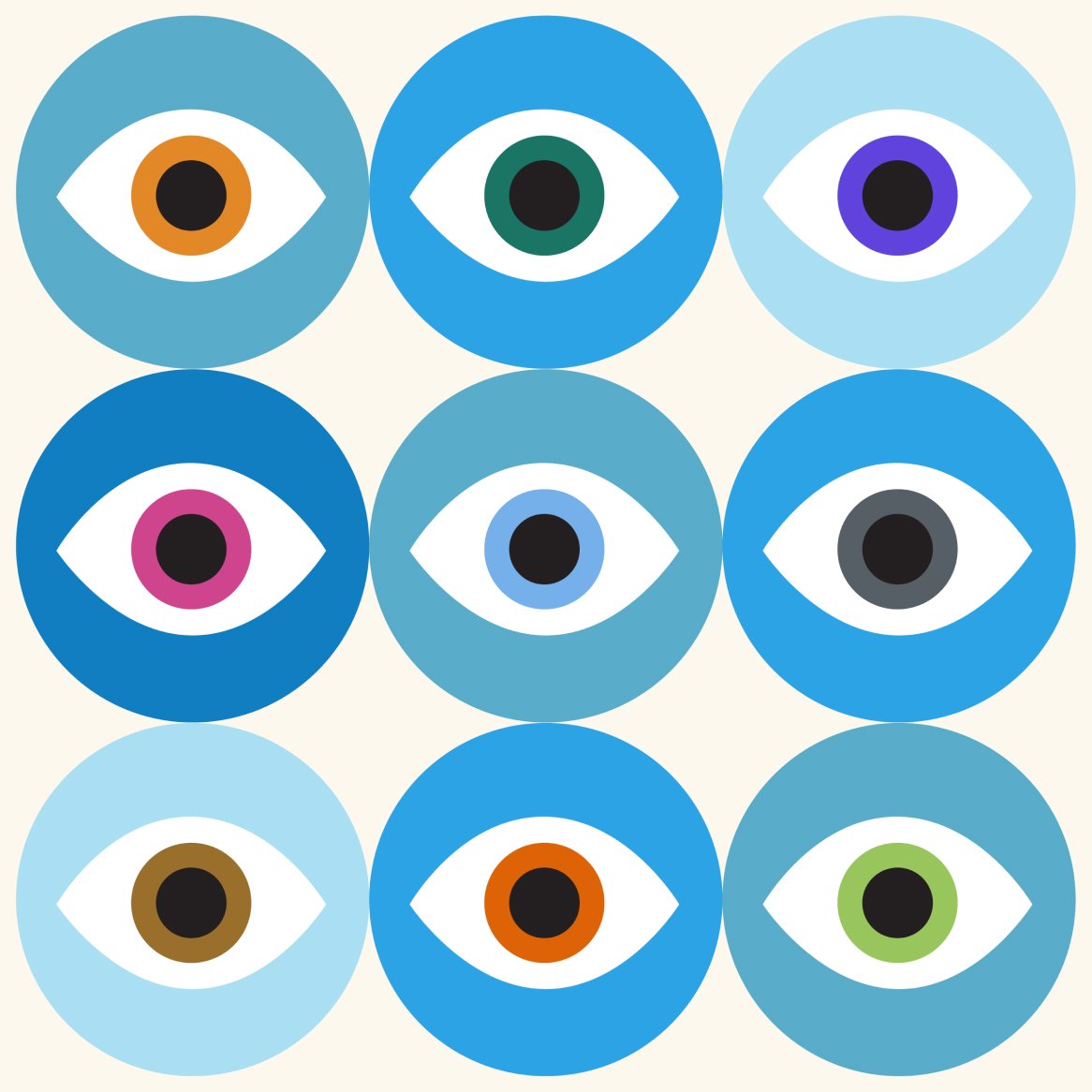Without a doubt, grey eyes are one of the rarest eye colors in the world. But just how rare are grey eyes? We can estimate that less than 1% of people in the U.S. have them. Therefore, it’s fair to say that the chances you’ve seen natural grey eyes in person are incredibly slim.
Just remember: The prevalence of certain eye colors will vary depending on the region you’re in and the source you’re consulting. When it comes to global numbers, multiple internet sources estimate around 3% of people worldwide have grey eyes—a rarity indeed! But not enough large-scale studies have been done to provide more accurate numbers. So, it’s impossible to say exactly how many people have grey eyes.
Curious to know more? Let’s dive into more interesting tidbits about grey-colored eyes.
What Do Grey Eyes Look Like?
Just like other eye colors, grey eyes can vary in their appearance—from lighter to darker shades. Grey eyes may have flecks of gold or green in them. And, similar to hazel eyes, it’s possible to see variations in coloring. Blue-grey, green-grey, and even hazel-grey hues are possible.
Grey Eyes vs. Blue Eyes
Grey eyes are often mistaken for light blue, but if you look close enough, you’ll see that they are, in fact, different. Even the first eye color classification scale (created back in 1843) included grey and blue as distinct eye colors. Blue-grey eyes may have areas of the iris that appear blue.
Green vs. Grey Eyes
Green and grey are more noticeably different eye colors than blue and grey. But green-grey eyes are a thing. Some grey eyes may have areas of the iris that appear greenish, making this variation easily mistaken for green eyes.
What Causes Grey Eyes?
Like blue eyes, grey eyes have little to no melanin in the front layer of the iris (called the stroma). But grey eyes are said to have more collagen in their stroma than blue eyes, which plays a part in their difference in color. So, what does this all mean? Let’s break it down.
Melanin in Grey Eyes
Everyone’s eyes contain melanin—a brown pigment that can be found in skin, eyes, and hair. All eyes have a brown pigment in the back layer of the iris, but the front layer’s pigmentation varies from person to person.
The presence of melanin in the eye affects the amount of light entering and reflecting back out, which affects the appearance of the iris. Eyes with more melanin have a darker color, while eyes with less melanin have a lighter color. And again, grey-colored eyes have low amounts of melanin.
Collagen in Grey Eyes
Collagen is a type of protein found in the iris, and it affects how light is scattered in the eye. Because grey eyes have higher amounts of collagen present, light scatters differently than it does in other eye colors.
Other Facts About Grey Eyes
Here are a few more interesting findings about grey eyes:
- According to Duke Health, people with grey eyes are more prone to photophobia (light sensitivity) because they are short on melanin.
- According to research, grey-eyed people (and those with other light eye colors) are less likely to have vitiligo—a disease that causes a loss of pigmentation in the skin.
Take Care of Your Eyes, No Matter Their Color
Much like a person’s fingerprints, no one has the exact same eye color as you. So whether they’re grey or any other color, they’re one of a kind.
And that’s all the more reason to ensure your eyes stay happy and healthy. If it’s been a year or two, reach out to your eye doctor and schedule an exam.








